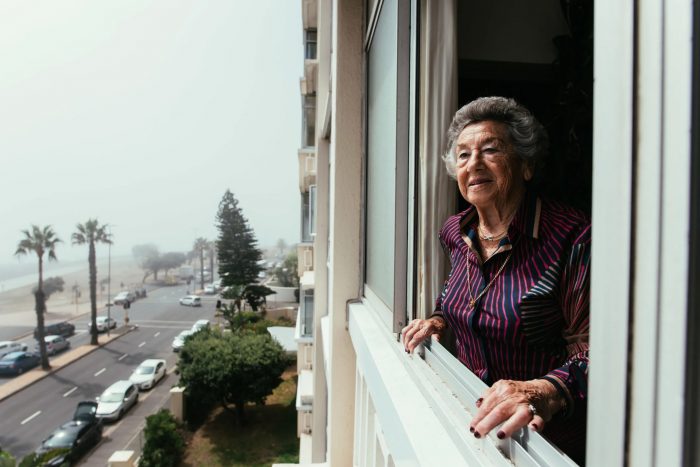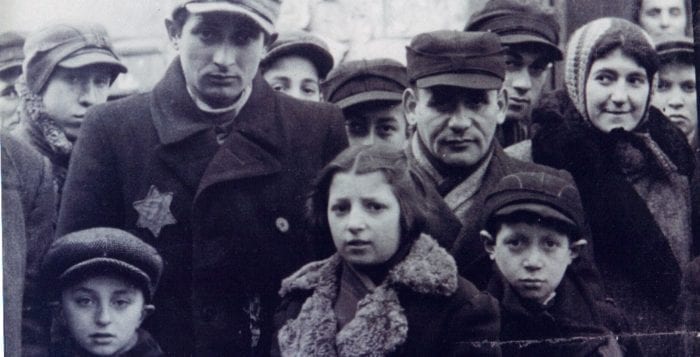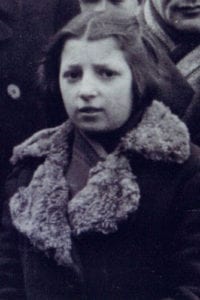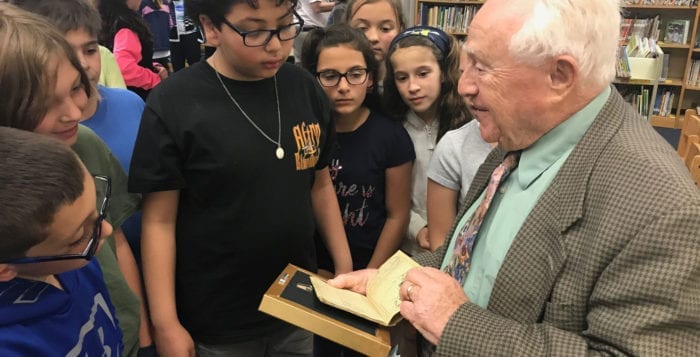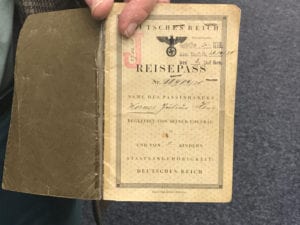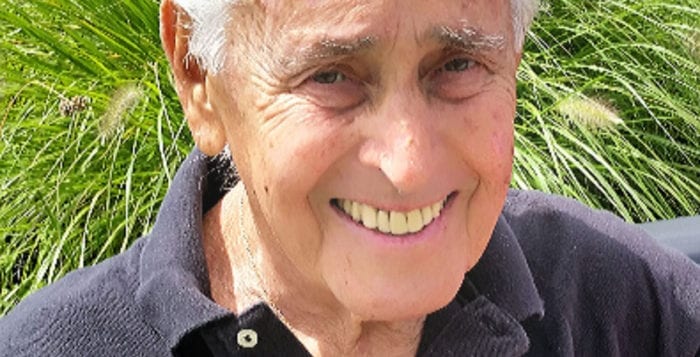By Jeffrey Sanzel
The opening of Jordy Sank’s documentary I Am Here is a montage of news reports from recent anti-Semitic events. It is a visual and emotional assault, with the ever-present and always disturbing swastika. From this, he cuts to a disc jockey at a Jewish radio station talking about Holocaust survivor Ella Blumenthal’s response to a hateful attack from a Holocaust denier. In Blumenthal’s letter, she offers to meet with the author. She wants to answer hate with a connection.
I Am Here is an account of Blumenthal’s life. Celebrating her 98th birthday in Cape Town, South Africa, surrounded by her children, grandchildren, and friends, she relates her story.
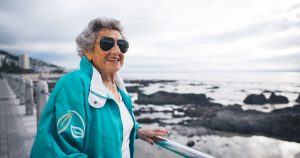
Born in Warsaw, she was 18 years old when World War II broke out in 1939. She lost 23 family members—“dear souls”—sent from the Warsaw Ghetto to the Treblinka death camp. She, her father, and her niece, Roma, went into hiding, but following the Ghetto uprising, the three were deported to Majdanek. She witnessed her father struck down by a guard—which was the last time she saw him. In 1943, she and Roma were sent to Auschwitz-Birkenau (where she was tattooed prisoner 48632) and finally ended in Bergen-Belsen before liberation.
Blumenthal shares her harrowing journey with passion and raw honesty. Speaking of things that she had held inside for years, her details evoke deep pain. She remembers the smell of burning feathers in the destruction of the Ghetto. She tells of the room in which they were held before deportation. At night, guards would come and take young girls and rape them.
The camps’ horrors are told in vivid, clear detail. She relates of nearly being gassed but getting a reprieve because the quota of five hundred exterminations had been filled. She describes the hanging of a prisoner after an escape attempt. At one point, Roma was contemplating suicide by throwing herself on the electrified fence. When they arrived in Bergen-Belsen, the camp had become nothing more than a charnel house, with the dead and dying everywhere. But even in this nightmare, she states: “I never lost hope, even in the darkest times of my life.”
She believes it was neither luck nor chance but God that helped her survive. Even in her tenth decade, she shows joy, light, and appreciation for all she has. She strives to bond with people, making visits, going on Facebook, and talking to her niece, who lives in New York. She believes that we must “make friends and show kindness.”
Her post-war life led her to Paris, then Palestine, where she met her South African husband, Isaac. They wed after only knowing each other for thirteen days. After that, they moved to Johannesburg, where they opened a business and raised a family. Her married life is shown in a wealth of home movies.
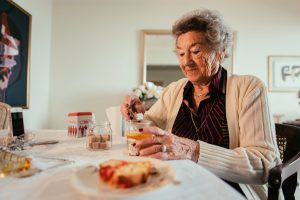
Juxtaposed with her history are clips of her current life: spending time with family, swimming, walking, and even making the Sabbath challah. References to “no food must be wasted” and “the plate must be cleared,” as well as a certain frugality (the use of one tea bag to make multiple cups), are presented with humor tinged with the shadow of one who went without.
What separates I Am Here from similar documentaries is the 2D animation. Created by Greg Bakker, the rough cartoons enhance the narrative with muted colors and stilted movement. These sections are more effective and affecting than the standard archival photos and stock footage that are employed elsewhere in the film. These moving illustrations create haunting images.
At the behest of her husband’s family, Blumenthal had her tattoo removed, an unusual and disturbing request, essentially eradicating her experience. She claimed the resulting scar was from a freak car accident. For years, she did not tell her children about her suffering “because the open wounds were still bleeding.” And yet, the adult children speak of her waking up screaming from nightmares. Blumenthal said that these terrible dreams were of the Nazis taking her children. Unfortunately, these questions and ramifications are not fully addressed. The letter from the beginning of the film is never mentioned again.
Blumenthal touches on some of the things that still haunt her. When speaking of her lost family, she muses, “Every person has a grave to go to. I have none. Not even ashes.” She admits that she had trouble mixing with people after the War for they did not know what she went through. She had to build a family to find a new world.
I Am Here offers a portrait of survival but a celebration of life. Blumenthal demonstrates gratitude for the family “next to her now” and “who can hear her when she laughs or cries.” People come to her for blessings as they see her as a source of positivity. She fears that what happened could happen again, and “we should not forget.” But her final message is “We must love people around us. Love everybody” — a powerful statement from a remarkable person.
Rated PG-13, I Am Here is now playing in local theaters.

